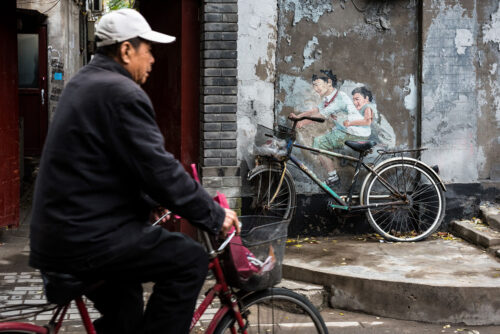Fire in Beijing hospital leaves at least 29 dead
A devastating fire in Beijing, which occurred at a scale rarely seen in major Chinese cities, left more than two dozen dead and many injured. Public anger at censorship and scrutiny of the hospital operator’s poor safety record is rising.

At least 29 people were killed after a massive fire swept through a private hospital in Beijing on Tuesday, April 19. A dozen people, including the hospital’s head and her deputy, have been detained by police over the deadly blaze.
At a press conference on Wednesday, local authorities said that they believed the fire was caused by sparks generated by renovation work, which ignited flammable paint inside the hospital. They also revealed that most of the deceased were patients at Changfeng Hospital in Beijing’s Fengtai district. A nurse, a care assistant, and a relative of a patient also died. The youngest victim was 40 years old and the oldest 88.
The death toll is likely to rise further, as another 39 people have been hospitalized due to various degrees of injuries with 21 of them in critical or serious condition.
Here is what we know about the tragedy so far.
What happened
The fire, among the deadliest in the Chinese capital in two decades, broke out at around 12:57 p.m. on Tuesday and quickly tore through an inpatient ward housing critically ill patients. Videos filmed near the scene of the tragedy showed people trapped in the seven-story building desperately hanging out of windows using bed sheets tied together, or perching on air conditioning units on the exterior of the building as dense smoke and flames engulfed the facility.
In response to emergency calls, firefighters from several departments were immediately dispatched to put out the fire. By 1:33 p.m., there were no visible flames. Roughly two hours later, rescue work concluded, with about 142 people evacuated, 79 patients moved to nearby hospitals, and a further 78 relocated to an unaffected building on-site.
On Wednesday, AFP journalists saw dozens of people outside the entrance to the hospital, where a large number of police officers were stationed. “Some of the hospital’s windows appeared blackened and at least one was broken,” AFP reported, with the facade of one of the hospital buildings being “completely blackened by soot.”
Censorship and public anger
Government censorship about the fire went into effect on Tuesday afternoon, soon after the fire broke out. As the tragedy unfolded, social-media posts about the incident were quickly scrubbed. It wasn’t until Tuesday evening, approximately eight hours after the fire erupted, that Chinese state media began reporting on it.
China news, weekly.
Sign up for The China Project’s weekly newsletter, our free roundup of the most important China stories.
Families of the victims and survivors were reportedly left in the dark until news articles about the fire emerged. According to China Youth Daily, there was a crowd of people at the hospital on Wednesday morning, demanding to know the status and whereabouts of their relatives who were affected by the fire.
“I just need to know if the patient is dead or alive. How could a person just disappear out of thin air? Neither the nurses nor doctors picked up their phones. My elderly relative doesn’t have a phone on him,” a frustrated family member was quoted as saying. Another relative told the newspaper that they weren’t notified of the fire and only learned about it after seeing the news.
The lack of transparency and promptness in the government’s communication of the fire has caused an uproar on Chinese social media, with many angry observers pointing out that such information control is common in China when it comes to major disasters and that it reflects how stability-obsessed officials fear unrest and always want to control the narrative.
What is Changfeng Hospital and was the tragedy preventable
Built in 1993 and located about 25 minutes by car west of central Tiananmen Square, the Changfeng Hospital in Beijing’s Fengtai district is a private institution specializing in the treatment of hemangioma and vascular malformation disease. As part of a hospital chain that operates over 20 locations across the country, the facility has 150 beds and employs more than 300 medical staff.
According to Chinese media reports, the company behind the chain has been suffering significant financial losses in recent years. Coming out of the COVID-19 pandemic, which had further damaged its business, Changfeng Hospital made a pivot to adult care, specializing in the treatment of disabled or handicapped seniors, whose immobility is particularly life-threatening during a fire.
The 12 people who were taken into custody Wednesday included the hospital’s president, its deputy head, and the person overseeing the construction project. They were detained on suspicion of “serious liability incidents,” as officials said at today’s press conference.
However, on Chinese social media, questions have been raised as to whether Wāng Wénjié 汪文杰, the founder and chairman of the hospital chain, should also be held accountable as the company has a poor track record ensuring fire safety in its buildings. In 2014, its location in Shanghai was fined 21,000 yuan ($3,050) for neglecting proper fire safety measures. In February, its hospital in Guiyang, Guizhou Province, received a penalty of 40,000 yuan ($5,800) after failing a fire safety inspection.






